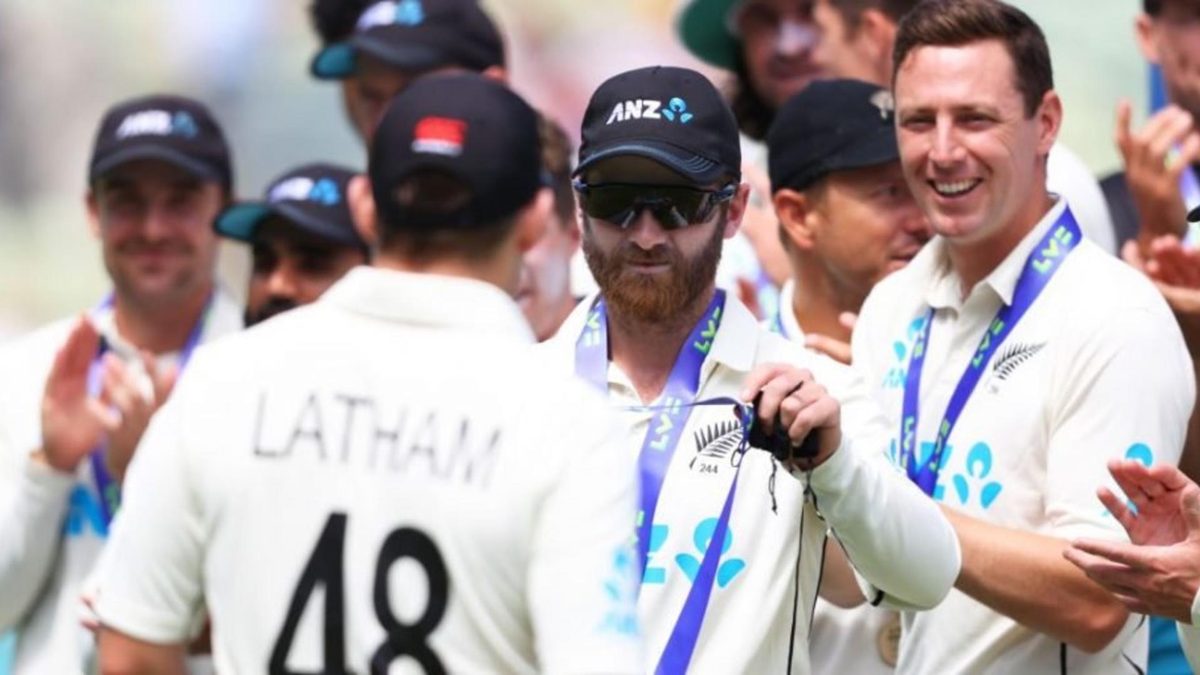
After their 1-0 win in England last year, followed by victory in the World Test Championship final, New Zealand return for a three-Test series as they look to make up for lost ground in their title defence.
Crucially, Kane Williamson returns after a lengthy layoff as they look to adjust to Test cricket without Ross Taylor and BJ Watling. Title holders of the inaugural Test Championship, they will be hoping to climb up the points table in the current cycle, where they currently sit in sixth. Facing them will be England, a side with a new captain and coach, and looking to begin a fresh journey.
Ahead of the first Test, the Williamson-led side will have plenty of selection questions to address:
How will the post-Taylor void be filled?
In their first overseas Test trip in the post-Taylor era, New Zealand would look to settle on their batting order for the future, while drafting back their talisman Kane Williamson in. It will be interesting to see what order they go with: Will Young has moved up to opening alongside Tom Latham, with Devon Conway slotting in at No.3 in Williamson’s absence. Will Williamson return to reclaim his position, or will Conway continue to stay put, with Williamson and Henry Nicholls following at four and five?
Who will be the all-rounder?
Soon to turn 36, Colin de Grandhomme rediscovered his batting groove with a career-best 120* against South Africa in February, his first Test ton in five years. The big score puts him ahead in the all-rounders race, that also has Daryl Mitchell in the mix. His medium pace has been used sparingly though, and largely untested at the top level, which could still keep de Grandhomme as the favourite. Another contender is Rachin Ravindra: the youngster would perhaps make it easier to field a side without a specialist spinner.
Is a specialist spinner really needed though?
One would have thought that Ajaz Patel became undroppable after his historic ten-wicket feat against India, but New Zealand hardly flinched in overlooking him for the Bangladesh tour that followed, strongly emphasising on their horses for courses approach. The other option is Ravindra, whose tidy left-arm spin accompanies his highly thought of batting.
Ajaz had a limited role to play in two Tests in England last year, picking up four wickets in two innings.
However, a specialist spinner might not be a surety at all – this century, just five New Zealand spinners have picked up a wicket in England, with Kane Williamson being one of them. On paper, New Zealand’s mighty pace attack is well-placed to ace England’s seam-friendly conditions, and spin might continue to play a subdued, secondary role.
In the World Test Championship final last year, New Zealand opted for a five-pronged pace attack, and used Ajaz Patel in a limited capacity in the series against England that preceded it. Further, their two main spin candidates, had a quiet Plunket Shield season: while Ravindra took nine wickets from six games, Ajaz finished with eight wickets from four games. With no paucity of pace options, it remains to be seen if New Zealand do find space to feature either of them.
Who will be the quicks?
Neil Wagner, Tim Southee, Trent Boult, Kyle Jamieson and Matt Henry: New Zealand’s pace attack is fully stocked, giving them plenty to think about for the final combination. Boult missed the last series, against South Africa, with Southee leading the pack alongside Jamieson and Wagner. Matt Henry made a return too: his recent Test returns have been impressive in an injury-riddled career. However, if they do pick a spinner, they’d end up having to choose just three out of the five options, making it a serious selection headache for the management. If they do want to extend their pool, Blair Tickner and Jacob Duffy are also part of the travelling camp.








